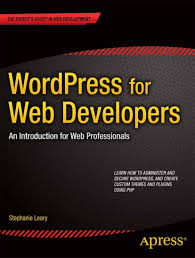WordPress, initially conceived as a blogging platform, has evolved into a powerful and versatile Content Management System (CMS) dominating the web. This white paper delves into the intricacies of WordPress development for web developers, exploring its core functionalities, advanced customization techniques, and diverse use cases. We will examine the benefits of WordPress development, discuss best practices, and provide valuable resources for developers to enhance their skills and build exceptional WordPress-powered websites.
WordPress for Web Developers: An Expanded and Exhaustive White Paper
Abstract:
WordPress, initially conceived as a blogging platform, has evolved into a powerful and versatile Content Management System (CMS) dominating the web. This white paper delves into the intricacies of WordPress development for web developers, exploring its core functionalities, advanced customization techniques, and diverse use cases. We will examine the benefits of WordPress development, discuss best practices, and provide valuable resources for developers to enhance their skills and build exceptional WordPress-powered websites.
1. Introduction
WordPress's open-source nature, coupled with its extensive community support and rich ecosystem of plugins and themes, has made it a preferred choice for developers worldwide. This white paper aims to provide a comprehensive guide for web developers seeking to leverage the power of WordPress for their projects.
2. Core Concepts
- WordPress Architecture: Understanding the file structure, database schema, and core functionalities of WordPress is crucial for developers.
- The Loop: The heart of WordPress, responsible for retrieving and displaying content.
- Template Hierarchy: A system that determines which template file WordPress uses to display a specific page or post.
- WordPress Codex: The official documentation for WordPress, an invaluable resource for developers.
- Theming:
- Theme Development: Creating custom themes involves modifying or creating template files, stylesheets (CSS), and JavaScript files.
- Child Themes: A safe and efficient way to customize existing themes without directly modifying the parent theme.
- Theme Frameworks: Pre-built frameworks that provide a solid foundation for theme development, such as Underscores and Genesis.
- Plugins:
- Plugin Development: Extending WordPress functionality by creating custom plugins to add new features.
- Plugin API: A set of functions and hooks that allow developers to interact with the WordPress core.
- Choosing the Right Plugins: Selecting reliable and well-maintained plugins is crucial for website security and performance.
3. Advanced Development Techniques
- REST API:
- Building Headless WordPress Sites: Decoupling the frontend from the WordPress backend using the REST API to create modern, flexible web applications.
- Creating Custom APIs: Extending the WordPress REST API to expose custom data and functionalities.
- Performance Optimization:
- Caching Techniques: Implementing caching strategies (browser caching, server-side caching, object caching) to improve website load times.
- Image Optimization: Optimizing images for web delivery to reduce file sizes and improve page load speed.
- Database Optimization: Optimizing database queries and using appropriate indexing strategies.
- Security Best Practices:
- Securing WordPress Installations: Implementing security measures such as strong passwords, regular updates, and security plugins.
- Preventing Common Vulnerabilities: Understanding and mitigating common WordPress vulnerabilities like SQL injection and cross-site scripting (XSS).
4. Use Cases
- E-commerce: Building online stores with WooCommerce, a popular e-commerce plugin for WordPress.
- Blogs and Personal Websites: Creating dynamic and engaging blogs with customizable layouts and features.
- Portfolio Websites: Showcasing creative work with visually appealing galleries and custom post types.
- Membership Sites: Creating membership communities with restricted access to content and exclusive features.
- Corporate Websites: Developing professional websites for businesses with custom functionalities and contact forms.
5. Tools and Resources
- Local Development Environments: Setting up local development environments using tools like XAMPP, MAMP, or Docker.
- Version Control Systems: Utilizing Git for version control to track changes and collaborate effectively.
- Debugging and Testing Tools: Utilizing debugging tools and browser developer tools for effective troubleshooting.
- WordPress Community: Engaging with the WordPress community through forums, meetups, and online resources.
6. Conclusion
WordPress offers a robust and flexible platform for web developers to create a wide range of websites. By mastering the core concepts, advanced techniques, and best practices outlined in this white paper, developers can unlock the full potential of WordPress and build exceptional web experiences for their clients.
References
- Books:
- "WordPress: The Missing Manual" by Matthew MacDonald
- "Professional WordPress: The Art and Business of Web Development" by Brad Williams and Justin Tadlock
- "Headless WordPress: Decoupling for a Modern Web" by David Vongries
- Papers:
- WordPress Development Handbook (WordPress Codex)
- Websites:
- WordPress.org
- WordPress Developer Resources
- Codecademy WordPress Courses
Note: This is a basic framework. You can expand each section with more detailed information, code examples, and real-world case studies. You can also include visuals like diagrams and screenshots to enhance the readability and understanding of the content.
I hope this comprehensive outline provides a solid foundation for your expanded white paper on WordPress for web developers.
